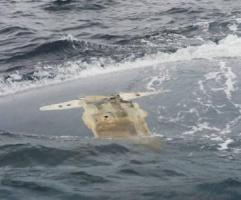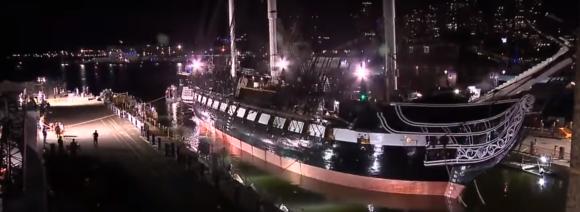 After a two year drydocking for restoration work, USS Constitution “Old Ironsides” has returned to the waters of Boston harbor. The frigate is the world’s oldest commissioned warship still afloat. Launched for the first time in 1797, she earned her famous nickname in battles during the War of 1812. She was later memorialized in the poem Old Ironsides by Oliver Wendell Holmes Sr.
After a two year drydocking for restoration work, USS Constitution “Old Ironsides” has returned to the waters of Boston harbor. The frigate is the world’s oldest commissioned warship still afloat. Launched for the first time in 1797, she earned her famous nickname in battles during the War of 1812. She was later memorialized in the poem Old Ironsides by Oliver Wendell Holmes Sr.
As reported by the Washington Post: The ship enters dry dock about every 20 years for below-the-waterline repairs. The most recent work included replacing 100 hull planks and installing 2,200 new copper sheets, 500 of which were signed by nearly 100,000 museum visitors, according to USS Constitution Museum President Anne Grimes Rand, who called the ship “a wonderful symbol for our democracy. It was meant to last for 10 or 20 years, and to have (the) ship here more than 200 years later, it needs constant care,” Rand said.

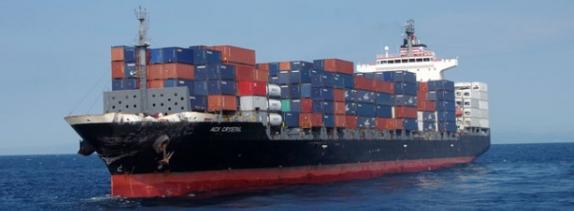 One recurring comment related to the
One recurring comment related to the 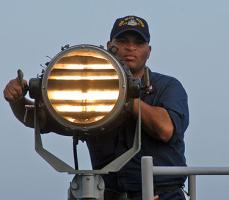 In 1867, Royal Navy Captain, and later Admiral, Philip Colomb, worked out a system to send signals by a code of dots and dashed using
In 1867, Royal Navy Captain, and later Admiral, Philip Colomb, worked out a system to send signals by a code of dots and dashed using 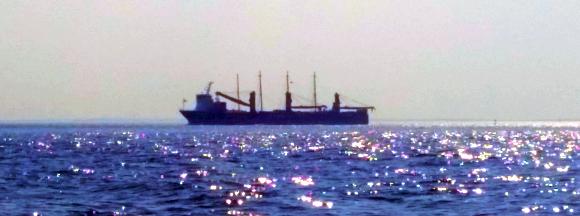 The ship was just a silhouette in the haze as we sailed into New York harbor. We were on the last leg of the delivery of my new/old sailboat Arcturus from southern Virginia to Oyster Bay, Long Island. The ship in the distance looked odd. The ship’s deck-house was forward with three pedestal cranes aft. What was strange was the other rigging, which at first looked like four king posts, rising from the deck. Why would a ship with pedestal cranes also have king posts?
The ship was just a silhouette in the haze as we sailed into New York harbor. We were on the last leg of the delivery of my new/old sailboat Arcturus from southern Virginia to Oyster Bay, Long Island. The ship in the distance looked odd. The ship’s deck-house was forward with three pedestal cranes aft. What was strange was the other rigging, which at first looked like four king posts, rising from the deck. Why would a ship with pedestal cranes also have king posts?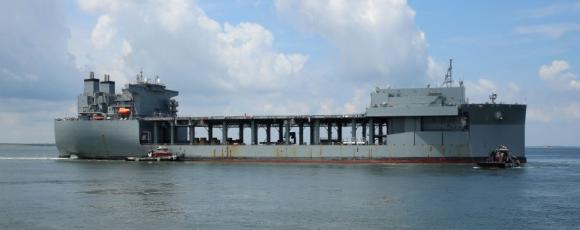 The USNS
The USNS 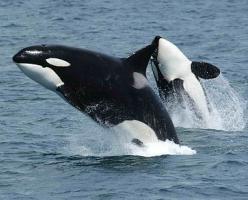 Since at least the 1960s there have been reports of
Since at least the 1960s there have been reports of 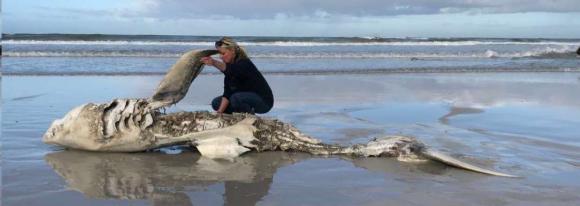 Along the shore of South Africa, at least four great white sharks have washed ashore with their livers almost surgically removed. Two were also missing their hearts. The culprit appears not to be human. All indications seem to suggest that orcas have removed the organs from the sharks, causing them to bleed out. One male shark carcass was found on June 24 in a relatively fresh state of decomposition, missing not just its liver, but its stomach and testes as well.
Along the shore of South Africa, at least four great white sharks have washed ashore with their livers almost surgically removed. Two were also missing their hearts. The culprit appears not to be human. All indications seem to suggest that orcas have removed the organs from the sharks, causing them to bleed out. One male shark carcass was found on June 24 in a relatively fresh state of decomposition, missing not just its liver, but its stomach and testes as well.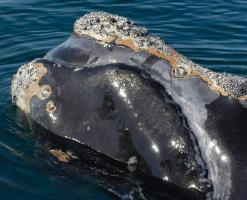 Last week, Joe Howlett, 59, a Canadian fisherman and a founder of
Last week, Joe Howlett, 59, a Canadian fisherman and a founder of 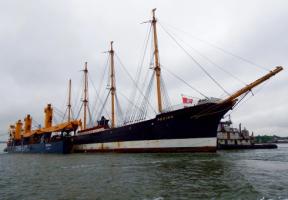
 Some 400 divers and snorkelers rocked-out to a unique sub-sea concert that promoted reef protection on part of the world’s third-largest living coral barrier reef last Saturday. The
Some 400 divers and snorkelers rocked-out to a unique sub-sea concert that promoted reef protection on part of the world’s third-largest living coral barrier reef last Saturday. The 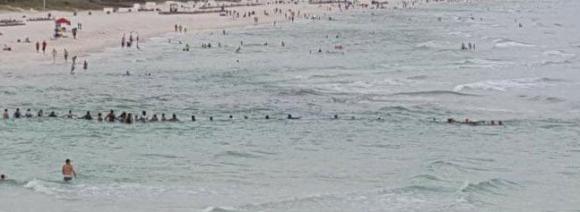
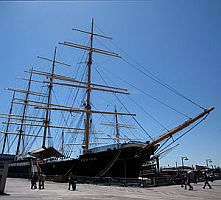
 This year’s
This year’s 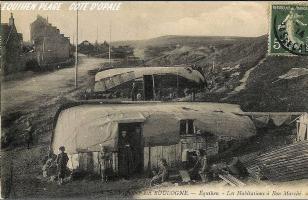
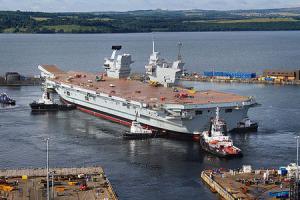 Originally posted on
Originally posted on 